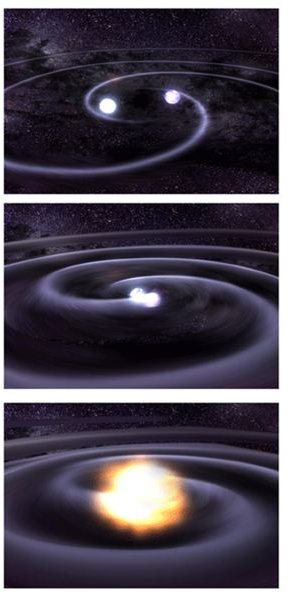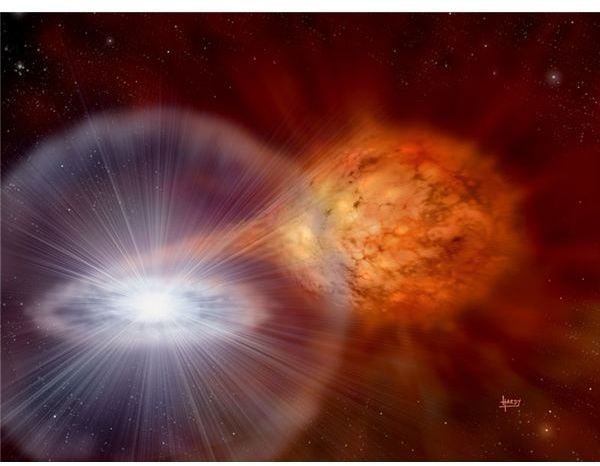The Chandrasekhar Limit, White Dwarfs & Supernovae
White Dwarfs Under Pressure
A white dwarf star is kept stable by two opposing forces: the electron degeneracy pressure pushing outwards, and gravity pulling inwards. The electron degeneracy pressure is created by the nuclear fusion at work in the heart of a star, fusing lighter elements into heavier ones.
This fusion has already resulted in the core of the white dwarf star consisting of incredibly dense substance called—you guessed it—electron degenerate matter. It is the amount of mass in this core that the Chandrasekhar Limit refers to. When the core is approximately 1.4 solar masses, this balance between gravity and the electron degeneracy pressure is upset enough that dramatic events ensue.
Pushing The Limit
But how does it happen that this balance is upset and the Chandrasekhar Limit reached? After all, matter just doesn’t appear out of nowhere. More mass must be accumulated to effect the gravity side of the equation, but how? There are a few ways:
Often, it is the case that this white dwarf star isn’t alone, and is in fact in a multiple star system, most commonly binary. In such cases, the two stars may orbit close enough to each other that matter may be sucked away from the lesser of the two stars to the more massive one—usually the incredibly small, incredibly dense white dwarf. The classic situation is with two main sequence stars with a mass imbalance, one already a white dwarf and the other a red giant, the outer atmosphere of the companion red giant spiraling into the white dwarf.
Collisions are another way that the Chandrasekhar Limit may be surpassed, though admittedly a less common one. This may be two stars that may be accreting matter from each other, but eventually spiral into each other and collide due to their extremely close orbit. However, this may also result in other types of supernova.
Artistic visions of reaching the Chandrasekhar Limit

Supernova!
So what happens when the Chandrasekhar Limit is reached? Supernova! Specifically, a core collapse supernova. Because the nuclear degeneracy pressure is no longer great enough to counter the force of the star’s own mass, gravity takes over and the star collapses in on itself, either into a neutron star or even a black hole. The release of gravitational potential energy during this collapse results in the spectacular fireworks we occasionally play audience to, either live from a few hundreds of millions of years ago or the spectacular artifacts left after the explosion.
There are a variety of supernovae that result from this process, all of which differ in slight ways—be it the triggering mechanism or the specific types of stars involved. For example, the supernova may actually be ignited by a runaway thermonuclear reaction in the core of the star as it approaches the Chandrasekhar Limit, a type 1a supernova.
Complications & Conclusions
Of course, there are things that can make that simple 1.4 number a bit different than we might expect. One of the most common complications is if the white dwarf happens to be rotating a fair bit, in which case centripetal acceleration adds to the force of the electron degeneracy pressure pushing outwards, allowing even more mass to be accreted before the Chandrasekhar Limit is reached and the star collapses.
All the quirks of the Chandrasekhar Limit and are not entirely understood—nor all of how it can play into supernova explosions. However, the Chandrasekhar Limit seems to hold mostly true. All observed type 1a supernova, for instance, have the same absolute magnitude at their peak, a strong indication that the explosions are being fed by the same amount of matter—those 1.4 solar masses.
